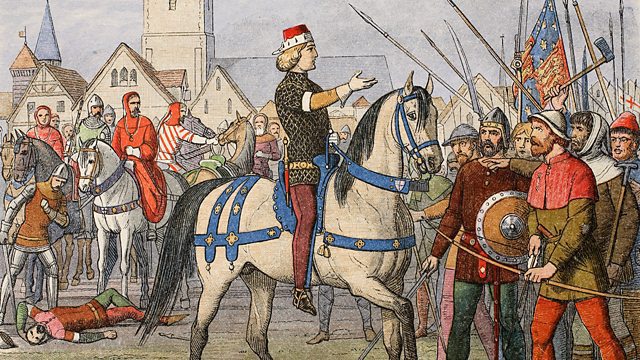Historical peasant revolts occurred for a number or reasons. New laws, including banning churches, raising taxes, imposing conscription, and abolishing hunting privileges, were some of those reasons. During times of revolution, peasant uprisings were more common than during times when the wheel of history was quietly at peace.
The Peasants’ War and the Vendée Rebellion happened one after the other during the Fench Revolution; the Pitchfork Uprising was evoked by the Russian Civil War that followed its revolution; the Saxon Peasant Revolt is the only example that happened outside the fever of an upheaval or major pitched battles. Behind all the revolts were angry, hungry, discontent citizens who preferred to fight for something worth dying for, rather than accept conditions not worthy of living in.

The Peasants’ War (1798)
The Peasants’ War of 1798 only lasted for a short time, just under two months. Still, by the end, the revolt killed 15,000 Flemish pepole and between 200-300 Luxembourgers. Notable factors that caused the outbreak were rooted in newly imposed laws implemented following the annexation of the southern Netherlands by France.
The French Revolutionary Wars were going into their sixth year (they began in 1792 and did not end until 1802). The French monarchy’s fall was marked by ongoing territorial changes that played themselves out in military conflicts. The Wars are divided into two parts. The War of the First Coalition ran from 1792-97. The first half is noted for a division amongst monarchies, the successful French war against Austria and Prussia, a growing desire to abolish the French monarchy, and the rise of Napoleon Bonaparte, which resulted in French attempts toward expansionism and territorial gains to be overwhelmingly successful. The Peasants’ War falls into the War of the Second Coalition that began when Napoleon steered his forces outside Europe and the French invaded Egypt.
At the same time Napoleon was marching into Cairo and taking the pyramids, things were heating up in the southern Netherlands. When the peasant situation there reached its tipping point, Bonaparte was knee deep in conflict. During the Battle of the Nile, his fleet was defeated and consequently sank, which left him stranded in Egypt. Meanwhile, priests and commoners in the annexed region of the southern Netherlands struggled to come to terms with French authority.
Priests were offered an unattractive ultimatum. They could either take an oath declaring their allegiance to the new government or, if they refused, subject themselves to punishment reserved for enemies of the state, which made losing one’s livelihood and home likely. A second law passed making military service a requirement for males living under French authority. Those between the ages of 20-25 had to serve in the military (during this time, conscription was a foreign and new byproduct of the French Revolution).

Conflicts caused by revolts in Flanders were organized. The peasants appealed to French enemies like Great Britain and Prussia to assist their plight. In mid-October 1798 peasants armed themselves and fighting began in Overmere. Given many of the peasants were fighting in protest of conscription, it should come as no surprise they had little to no military training. This, in concert with being poorly armed, sealed their fate.
In December of 1794, the city of Hasselt became the stage for the most grisly defeat during of Peasants’ War. Between 5,000 – 10,000 peasants were killed and 150 leaders of the rebellion were executed.
In Luxembourg, the scene was dire for the opposite reason. Middle and upper-class citizens decided to forego fighting largely because the ideas bringing Europe into the age of modernity appealed to them. Peasants who stood little to gain by French rule fought, but without the support to obtain funding, necessary weapons, and little to no training, they were easily annihilated.

